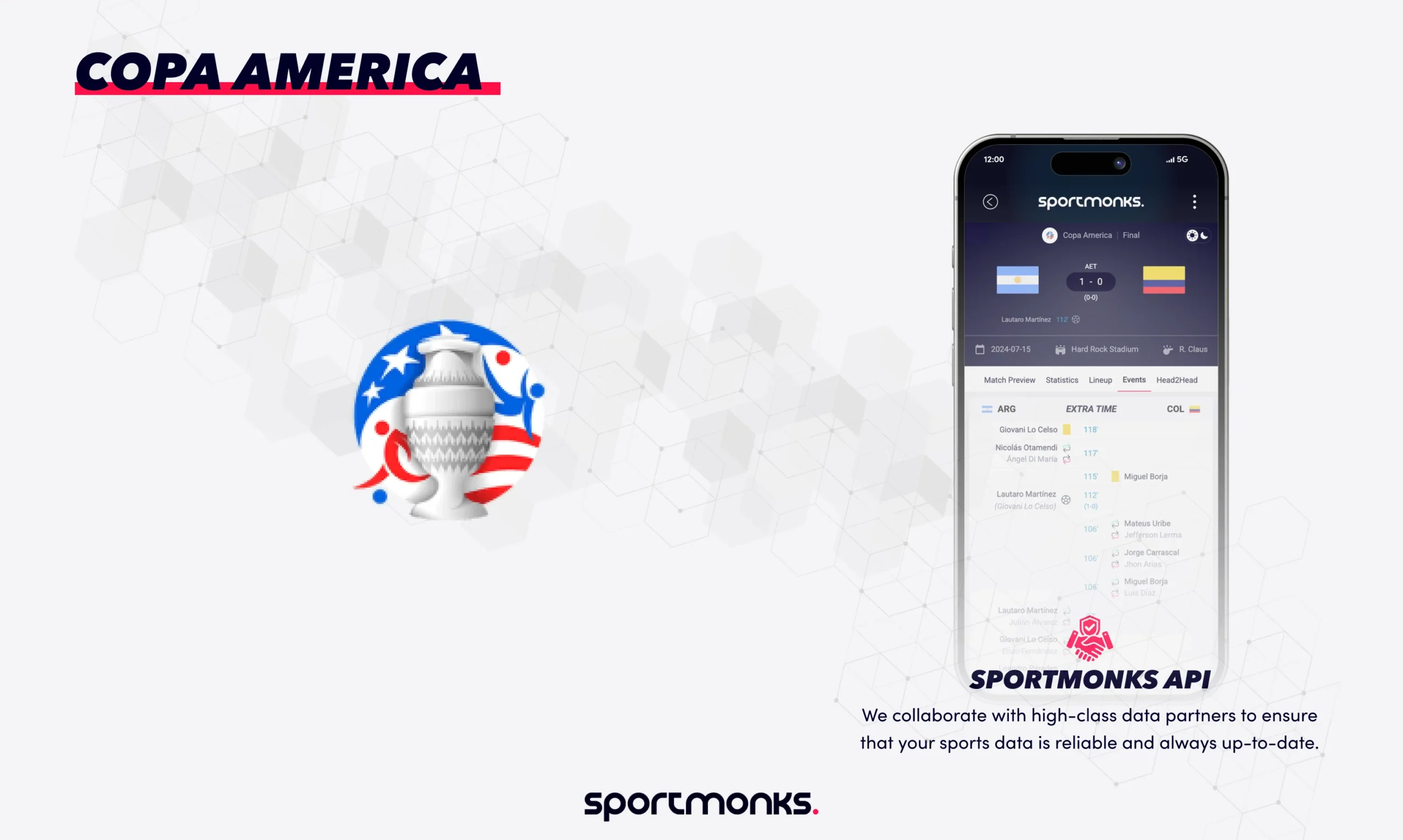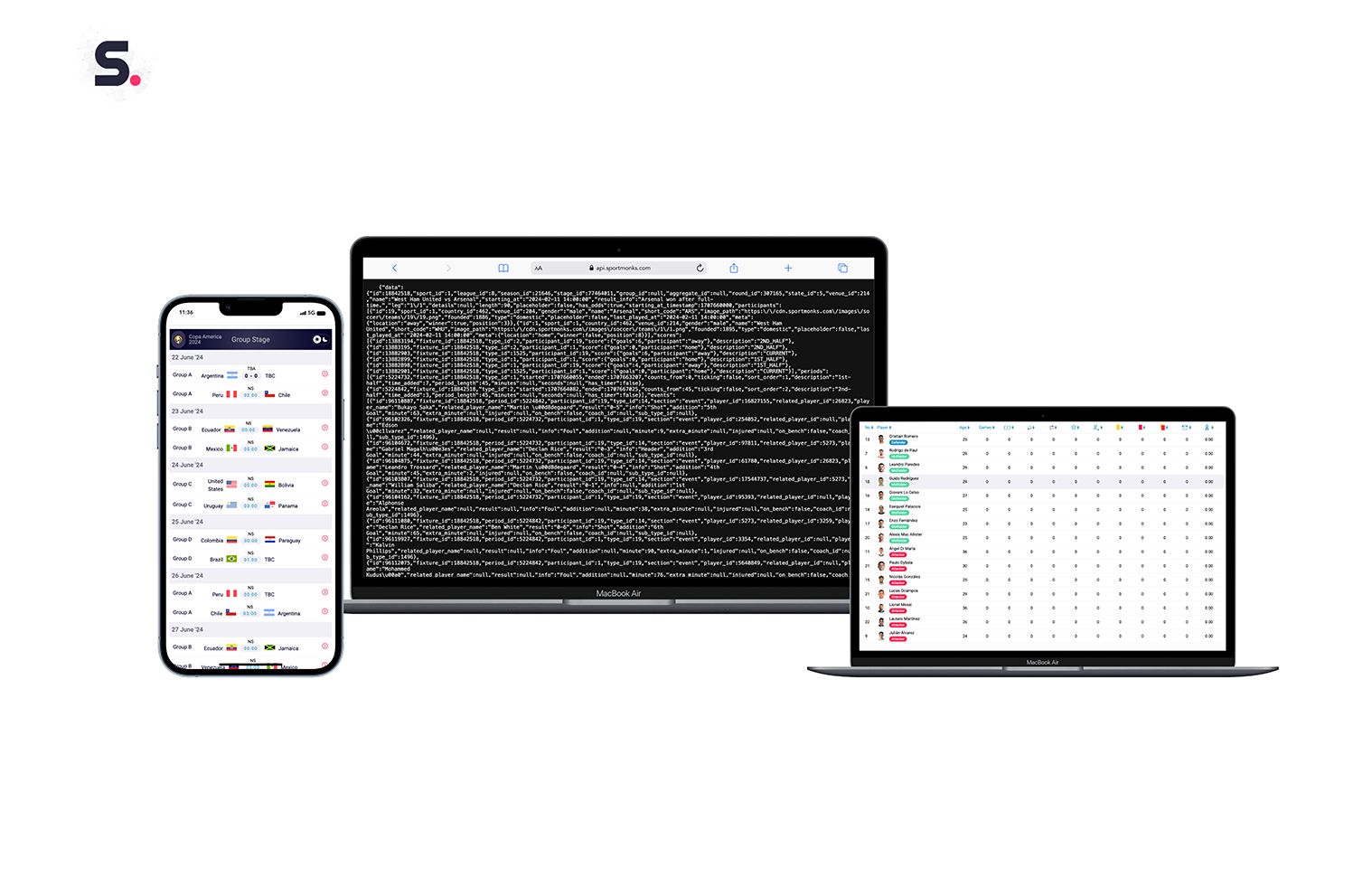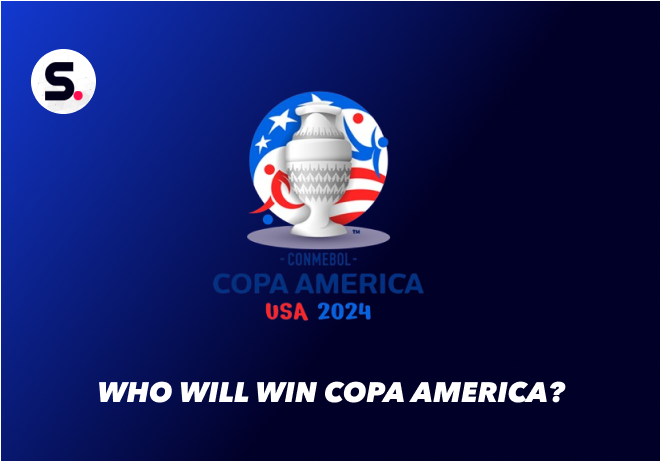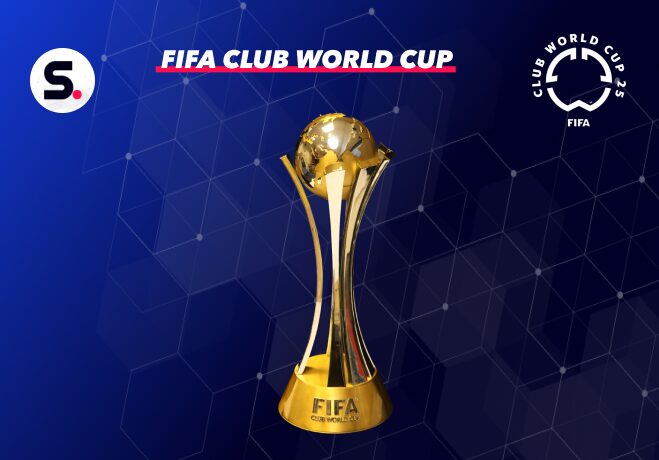
Contents
History and evolution of the Copa América
The Copa América boasts a long and storied history, evolving significantly since its inception.
– Origins and early years (1916): The Copa América began as the South American Championship in the 20th century in 1916, coinciding with Argentina’s independence centenary celebrations. It was a round-robin tournament with four teams: Argentina, Brazil, Chile, and Uruguay, and Uruguay won the first edition. Early years saw dominance by Argentina and Uruguay, with Brazil also securing titles, reflecting the fierce rivalries and footballing prowess of these nations.
– Name change and expansion: In 1975, the tournament was renamed Copa América, marking a shift to a more structured format. From 1975 to 1983, it used a home-and-away format without a fixed host. Starting in 1993, CONMEBOL invited teams from other confederations, primarily CONCACAF, expanding to 12 teams, though the 2016 and 2024 editions featured 16 teams, including six from CONCACAF, broadening its appeal and competitiveness.
– Modern format and frequency: Today, the Copa América typically includes 10 CONMEBOL nations and two invited teams, competing in a group stage followed by a knockout phase. Historically, its frequency varied, with early editions held annually or biennially, but it now aligns with a quadrennial schedule, though gaps and close successions occurred due to logistical and political factors.
– Centenary celebration: The 2016 Copa América Centenario, hosted in the United States, marked the tournament’s 100th anniversary with an expanded field of 16 teams from CONMEBOL and CONCACAF, a significant milestone as it was the first time held outside South America, enhancing its global reach.
– Trophy legacy: An interesting aspect is the trophy’s history: first awarded in 1916, it has been in continuous use and was restored in 2023 for the 2024 edition, weighing around 9kg kilograms ((19.8 pounds) and symbolizing South American football heritage.
Impact and significance of the Copa América
The Copa América is more than just a tournament; it’s a powerful force in the world of football. It has a major impact on South American and international football by showcasing amazing talent, fueling intense rivalries, and resonating with fans on a cultural level.
– Showing top South American talent The Copa América has long been a launchpad for South American players to dazzle the world, often helping them secure moves to Europe. For instance, in the 2021 Copa América, Lionel Messi not only ended Argentina’s 28-year trophy drought but also delivered a masterclass with 4 goals and 5 assists, reinforcing his global stature and improving his GOAT shouts. Similarly, after his 2014 World Cup performances, James Rodríguez continued to flourish when the lights were brightest and in 2015 led Colombia to the quarter-finals which helped him move to Real Madrid.
– Pride of your country: Winning the Copa América ignites unparalleled national pride, uniting countries in celebration. When Argentina triumphed in 2021 at the Maracanã, Messi’s tears of joy perfectly described the joy of millions, ending decades of near-misses (in 2015, 2016 and 2019) and solidifying football as a cornerstone of Argentine identity. Likewise, Uruguay’s 2011 victory, led by Diego Forlán, rekindled memories of their historic dominance and footballing heritage.
– Close rivalries: The tournament thrives on fierce rivalries that electrify matches. The Argentina vs. Brazil clash is a perennial highlight—shown by their 2021 final showdown, where Ángel Di María’s chip sealed a 1-0 win, silencing the Brazilian crowd and intensifying their century-long battle for supremacy. Another classic, Chile vs. Peru (Clásico del Pacífico), saw Chile’s 2-1 victory in the 2015 semi-finals, sparking heated debates over bragging rights that trace back to historical tensions.
– Football development: The Copa América drives football growth in South America by setting a competitive benchmark. Brazil’s frequent heavyweight status, deep runs and triumph in 2019 fueled by Vinicius, Thiago Silva, Ederson and co helped create more grass-root programs which further elevated Brazilian talent and produced talents like Endrick and Savinho.
– Wider global reach: Stats from CONMEBOL show that over 84 million people watched the Copa América matches in Brazil, an 82% increase in viewership compared to 2021. In Argentina, the defending champions this year, the final had around a 59% viewership. The 2024 edition in the United States, featuring stars like Vinícius Jr. and Luis Díaz,expanded its reach, getting North American fans and highlighting the continent’s footballing spirit.
– Huge financial benefit: Hosting the Copa América boosts economies significantly. Brazil’s 2021 tournament generated an estimated $118 million in revenue, with cities like São Paulo and Rio de Janeiro seeing packed hotels and bustling local businesses. Stadium upgrades and infrastructure projects also leave lasting legacies for host nations.
– Diversity in cultures: The inclusion of invited teams brings cultures together. In 2024, Mexico and the United States joined CONMEBOL nations, blending North American tactical discipline with South American flair. Matches like USA vs. Uruguay brought fans together, exchanging chants and traditions, enriching football’s global tapestry.
– The competition’s history: As the world’s oldest continental tournament since 1916, the Copa América’s legacy is unmatched. Uruguay’s inaugural 1916 win laid the foundation, while moments like Ronaldo’s 1997 emergence—scoring 5 goals en route to Brazil’s title—add to its storied history, connecting past triumphs to modern glory.
– Influence on how teams play: The Copa América has shaped global football styles with its flair and tenacity. Brazil’s jogo bonito, epitomised by Neymar’s dazzling runs, contrasts with Argentina’s gritty resilience, seen in Emiliano Martínez’s penalty heroics in 2021. These styles inspire coaches worldwide, from Europe’s possession-heavy systems to Asia’s adoption of South American creativity.
The drama of the Copa: Passion, controversy, and heartbreak
The Copa América is a wild ride of football emotions, where big rivalries and high stakes create some truly unforgettable moments. It’s a place where passion explodes, with stories of victory, defeat, and controversy that stick with you long after the games are over.
Messi’s journey and Argentina’s quest
Lionel Messi’s story in the Copa América is full of heartbreak, resilience, and finally, redemption. It’s tied to Argentina’s long struggle for glory. They went 28 years without winning a major trophy (since their Copa win in 1993), which was tough on both the fans and the players. For Messi, the pressure was immense (especially with the Diego Maradona comparisons). When they lost to Chile in the 2016 final, and he missed his penalty kick, it was almost too much to bear. He even announced his retirement from international football, showing how deeply it affected him.
But the pull of the Albiceleste proved too strong. Messi returned, his resolve hardened, and in 2021, at the legendary Maracanã stadium, he finally achieved redemption. Facing their arch-rivals Brazil, Argentina triumphed 1-0, Di Maria’s delicate chip sealing a victory that echoed through the ages. The image of Messi, tears of joy replacing those of despair, lifting the trophy, is forever etched in Copa América lore. It silenced his critics, ended Argentina’s long wait, and cemented his place as a legend.
Controversial refereeing decisions
The Copa América has a storied history of refereeing controversies that amplify its intensity. The 2019 semi-final between Brazil and Argentina stands out as a flashpoint. Brazilian referee Roddy Zambrano waved away a shout when Dani Alves felled Sergio Agüero in the box and another when Authur nudged Otamendi. Messi’s post-match outburst—“it was rigged”—captured Argentina’s fury and sparked widespread debate.
Another contentious moment came in the 2015 Copa América quarter-final match between Chile and Uruguay, held on June 24, 2015, in Santiago, Chile, a highly debated incident occurred. During the second half, with the score still at 0-0, Uruguayan striker Edinson Cavani was involved in a confrontation with Chilean defender Gonzalo Jara. Jara provoked Cavani by poking him inappropriately from behind, an unsporting act that went unnoticed by the referee at the time. Cavani reacted by pushing Jara’s face, prompting referee Sandro Ricci to issue Cavani a second yellow card, resulting in his ejection from the match in the 63rd minute. Jara, however, received no immediate punishment on the field.
The intensity of Argentina vs. Brazil clashes
Argentina versus Brazil is the Copa América’s fiercest rivalry, a clash of titans marked by physicality and brilliance. The 2007 final saw Brazil dismantle Argentina 3-0.
The 2021 final offered a modern classic. Brazil’s Casemiro and Argentina’s Rodrigo De Paul set the tone with crunching tackles, both earning bookings. These matches are less games than battles, defined by relentless intensity and moments of genius.
Their head to head record is also pretty impressive, with 34 Copa matches between these teams , Brazil have 10 wins, to Argentina’s 16 and a stalemate on 8 occasions.
Unexpected upsets and shock exits
The Copa América thrives on its unpredictability, with underdogs toppling giants. In 2011, hosts Argentina—tournament favourites—crashed out in the quarter-finals against Uruguay. Despite controlling the game and extra-time, they fell 5-4 in a penalty shootout after a 1-1 draw, leaving the home crowd shell-shocked.
Player ejections and on-field brawls
Passion often erupts into chaos in the Copa América, with red cards and melees punctuating its history. The 1995 quarter-final between Brazil and Argentina turned ugly after Brazil’s Túlio scored a disputed goal. Argentine protests sparked a mass brawl, with several players sent off and play halted amid the disorder.
The 2015 group stage clash between Colombia and Brazil boiled over when Neymar headbutted Jeison Murillo, earning a red card and triggering a fracas involving both teams. These incidents reflect the tournament’s combustible spirit, where emotions run unchecked.
The emotional rollercoaster of penalty shootouts
Penalty shootouts in the Copa América are heart-stopping affairs, swinging between ecstasy and agony. The 2015 final saw Chile edge Argentina after a goalless draw, with Alexis Sánchez’s cool finish sealing victory and leaving Messi and his teammates crestfallen.
In contrast, the 2021 semi-final against Colombia brought redemption. Goalkeeper Emiliano Martínez became a national hero, saving three penalties and taunting opponents with his now-iconic “I’m eating you, brother” chant. His heroics propelled Argentina to the final, turning anguish into euphoria in a matter of moments.
Challenges facing the Copa América
The Copa América is a big deal in South America, but it has some problems that stop it from being as respected as it could be. Things like changing the dates all the time, dodgy refereeing, and arguments about who plays, all make people think less of it.
Inconsistent scheduling and tournament frequency
The Copa América’s timing is all over the place. Unlike the Euros or World Cup, which happen every four years, this tournament changes dates a lot.
For example, it was on in 2015, then again in 2016, then 2019, and then delayed until 2021. This mix of back-to-back tournaments and long gaps makes it hard for fans to get excited and for teams to plan properly.
The 2021 delay, where Brazil had to step in at the last minute, shows how messy things can get. This changing schedule makes the Copa América feel less important and harder to follow.
Allegations of rigging and biased officiating
People often say the Copa América referees are unfair. There are lots of claims of dodgy decisions and even cheating in big games, which makes people think the tournament isn’t fair.
For example, in 2019, Argentina were angry when Brazil got a penalty. Lionel Messi said the whole thing was “fixed” for Brazil. Also, in 2015, Cavani got a red card that many thought was too harsh, helping Chile win.
These sorts of things make people think the home team gets an unfair advantage. Unlike the Euros, where refereeing problems don’t usually cause big trust issues, these incidents make people doubt the Copa América’s fairness.
Global glamour and commercial appeal
Even though South American fans love it, the Copa América isn’t as big worldwide as the Euros. It doesn’t have the same sparkle or make as much money.
For example, loads more people watched the last Euros final than the Copa América one. This is partly because the Euros are shown at better times for people in Europe and Asia, and they’re advertised everywhere.
Also, the Euros use famous stadiums like Wembley and have big adverts with players like Mbappe, Bellingham and Haaland. The Copa América often uses less well-known places and its adverts mainly target South America.
Because of time differences, people outside the Americas have to watch games late at night (or early in the morning in Africa). And the tournament’s advertising doesn’t grab the world’s attention as much. This makes the Euros feel like the top international football event
The use of invited nations
The Copa América sometimes invites teams from other places, which people have mixed feelings about. They want to make it more interesting, but it can cause arguments about what the tournament is really about.
For example, in 2016, they had lots of teams from North America, including Mexico and the USA. It brought in more fans, but some people thought it made the tournament less South American.
They’ve also invited teams like Qatar and Australia, which some people thought was a bit odd. Qatar didn’t play very well, and Australia pulled out.
Unlike the Euros, which only has European teams, the Copa América’s open to others. This can make it feel a bit less like a proper South American competition. Fans love seeing Argentina play Brazil, and they feel like invited teams take away from that. However, others say it makes the tournament more popular worldwide, like when Mexico played.
Important football data and Sportmonks coverage
Football data sharpens your view of the Copa América, revealing what drives its thrilling matches. Sportmonks’ Football API delivers live updates and statistics for fans, analysts, and developers to explore. It tracks goals, cards, and substitutions as Argentina face Brazil, alongside ball possession and shots to show who controls the game. Historical data uncovers past triumphs, while player stats detail goals, assists, and passing accuracy—think Messi’s brilliance or Vinícius Jr.’s speed. This isn’t only for supporters; it’s valuable for building apps or planning strategies. Sportmonks includes the Copa among over 2,200 leagues, with options like the European plan at €39 monthly (27 leagues), Worldwide at €129 monthly (111 leagues), or a custom-priced Enterprise for all competitions. Visit Sportmonks Football API Plans to unlock the tournament’s full story.


